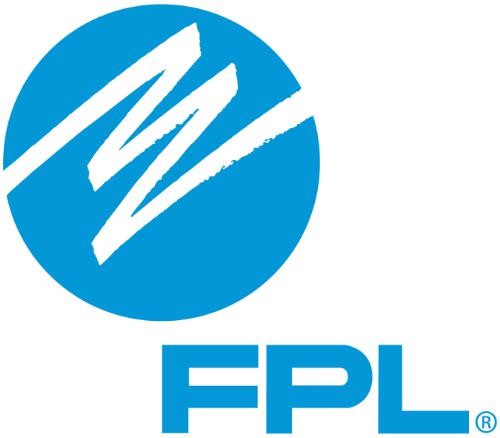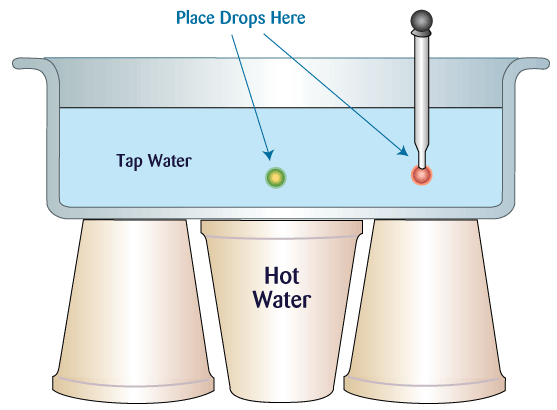
Overview
Title: Convection Connection
Grade: 6th Grade
Duration: 45 Minutes
The students will describe and discuss a convection current. They will set up an experiment that illustrates convection currents and observe the movement of water over a heat source by putting drops of food coloring in an “ocean” pan.
Standards
Science – SC.6.E.7.1
Differentiate among radiation, conduction and convection, the three mechanisms by which heat is transferred through Earth’s system.
Objection
The students will describe and discuss a convection current. They will set up an experiment that illustrates convection currents and observe the movement of water over a heat source by putting drops of food coloring in an “ocean” pan.
Vocabulary
Radiation • Conduction • Convection • Density • Matter • Cycle • Dynamic • Interaction • Molecular • Atmosphere • Hydrosphere • Geosphere • Cryosphere • Biosphere
Overview
- The fluid nature of water allows it to transport heat globally.
- The transmission of heat via the vertical flow of a liquid (or gas) in a liquid (or gaseous) medium is called convection.
- Convection is an extremely important mechanism in the oceans and the atmosphere.
Materials
- 9-inch x 13-inch Pyrex pan
- 3 Styrofoam cups
- Thermostat
- Tap water
- Hot water
- Ice or chemical cold pack
- Food coloring
- Droppers
- Paper and pencil for logging observations
Procedure
Before you begin:
- Adult Supervision is advised!
- During this activity you can be rather wet.
- You might wish to set it up outside or use a pan or drop cloth underneath to catch spills.
While this activity works much better as a small group activity, it is possible to complete it in a whole class setting. We recommend using an overhead projector or Smart Board so that:
- All students have a view of the diagram shared below
- All students are able to chart the movement of the food color drops
- Gather the materials together and set up one equipment tray for each group of students.
Each tray should include:
- a pan
- three cups
- food coloring
- a dropper
The students need to have access to tap water and to hot water. For better results, use hotter water. Tap water will work, but the results are not as dramatic.

Figure 1. Diagram showing the lab setup and the side view of the pan with the cups of water under it
Procedure Engagement
Heat transfer is the process by which heat is exchanged between objects or parts of objects. Heat is generally transferred by convection, radiation, or conduction. For example, heat is transferred by conduction through the brick wall of a house and Earth receives heat from the Sun by radiation. In this activity, you will explore convection, heat exchange through movement of water, and currents that are caused as a result of heatflow.
Activity
- Draw the picture that is on the board on a data collection sheet. Form a hypothesis about the way water will move in the pan.
- Gather your equipment tray and set up your experiment. Fill the Pyrex pan 2/3 full with Turn two of the cups upside down (to use as a bridge) and set the pan of water on top of the two cups. Fill the third cup with hot water and place it under the center of the pan of water. Leave the pan for several minutes until the water has stopped moving. Put one drop of food coloring on the bottom of the pan in the center (directly over the heat source), and put one drop on the bottom halfway to the edge.
- Observe what happens to the drops in your pan. Draw a diagram of what you observed. Which way does the water move over the heat source? What happens to the water when it reaches the surface? What happens to the water when it reaches the edge? Which way does the water move along the bottom of the pan?
- Take the temperature of the water directly over the heat source and off to the side of the pan. Is there a difference in temperature? How does this affect the drops of food coloring? Summarize the results again, but this time in the context of the temperature changes.
- Set up the experiment again. This time put hot water on the edges instead of the center of the pan. What happens if you use ice and make the water colder? How does cold water affect the currents?
Explanation
The kind of movement observed takes place whenever liquids or gases are heated unevenly. The heat source under the center of the pan heats the water directly above it. This hot water rises to the surface and spreads out toward the edges of the pan. As it moves farther from the heat source, the water cools and sinks back toward the bottom of the pan. As the cooler water moves toward the heat source, it becomes warmer and rises to the surface again. The motion of water in this pan is called a convection current.
Adapted from Orange County Marine Institute Curriculum Series
